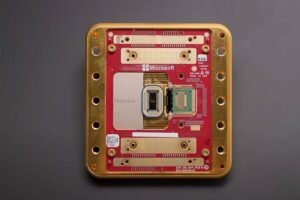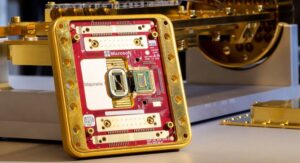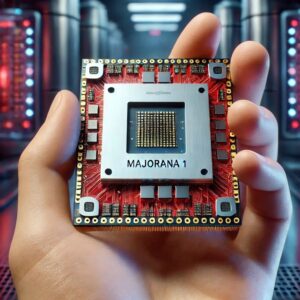In February 2025, Microsoft announced a significant advancement in quantum computing with the introduction of Majorana 1, its first quantum processor utilizing topological qubits based on Majorana particles. This development represents a potential breakthrough in creating more stable and scalable quantum computers, addressing longstanding challenges in the field.
Understanding Majorana 1
Majorana 1 is a quantum processing unit (QPU) developed by Microsoft, designed to harness the unique properties of Majorana fermions—particles that are their own antiparticles, first theorized by Italian physicist Ettore Majorana in 1937. The chip employs a “Topological Core” architecture, utilizing topological superconductors made from an indium arsenide-aluminum hybrid material. This design aims to offer greater stability and scalability compared to traditional qubit technologies, which often face issues like decoherence and operational errors.
Development History
Microsoft’s journey into topological quantum computing began in the early 2000s, focusing on qubits that could inherently resist environmental disturbances. In 2006, the company established Station Q, a research lab dedicated to exploring topological phases of matter and their applications in quantum computing. Collaborations with institutions like TU Delft led to experimental observations suggesting the existence of Majorana zero modes in nanowire systems. Despite setbacks, including a notable retraction in 2018 due to data interpretation issues, Microsoft’s persistent research culminated in the unveiling of Majorana 1 in 2025.
Technical Specifications
The Majorana 1 chip currently integrates 8 qubits but is designed with the potential to scale up to 1 million qubits within a compact 10 cm x 10 cm device. Operating at extremely low temperatures of 50 millikelvin (-273.1°C), the chip’s topological properties aim to provide high resistance to errors, potentially offering coherence times significantly longer than those of conventional superconducting qubits.
Potential Applications
The successful implementation of Majorana 1 could revolutionize various sectors:
-
Cryptography: Quantum computers with topological qubits could break existing cryptographic systems like RSA, necessitating the development of quantum-resistant encryption methods.
-
Drug Discovery: Enhanced simulation capabilities could lead to the rapid discovery of new pharmaceuticals by accurately modeling complex molecular interactions.
-
Artificial Intelligence: Quantum computing could significantly accelerate the training of AI models, leading to advancements in machine learning and data analysis.
-
Sustainable Technologies: Quantum simulations could aid in developing new materials for energy storage, carbon capture, and other environmental applications.

Future Outlook
Microsoft plans to integrate Majorana 1 into its Azure Quantum platform, initially providing access to researchers and developers. The roadmap includes achieving 50 logical qubits by 2027 and scaling to 1,000 by 2030, targeting practical applications in various industries. Collaborations with programs like DARPA’s Underexplored Systems for Utility-Scale Quantum Computing (US2QC) aim to accelerate the development of fault-tolerant quantum computing prototypes in the coming years.
Community Response and Controversies
The announcement of Majorana 1 has elicited both excitement and skepticism within the scientific community. Some experts question the veracity of Microsoft’s claims, citing past controversies and the need for independent validation of the chip’s performance. For instance, Amazon executives have expressed doubts about the scientific evidence supporting Microsoft’s assertions, referencing previous instances of scientific misconduct in the quantum computing sphere.
Additionally, experts like Arka Majumdar and Scott Aaronson have questioned the significance and validation of Microsoft’s advancements.These perspectives highlight the importance of rigorous peer review and empirical validation in the rapidly evolving field of quantum computing.
Conclusion
Majorana 1 represents a bold step toward realizing stable and scalable quantum computers. While challenges remain, including the need for further validation and addressing technical obstacles, Microsoft’s innovation has the potential to transform various industries by solving complex problems currently beyond the reach of classical computing. As research and development continue, the coming years will be crucial in determining the practical impact of this technology on society.

